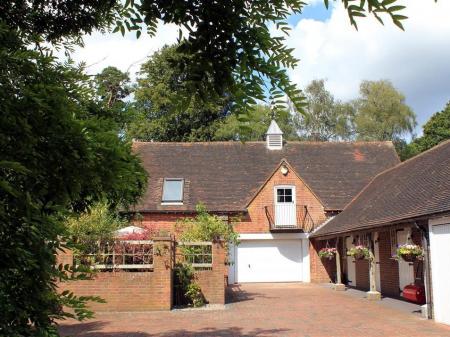
Bishop Gravesend's new hall was a family manor, not church property. There was almost certainly an earlier house on the site dating back to the Saxon period.
The original timber hall was heavily modified in 1825 when half the hall was torn down, to be replaced by a villa made of brick and stucco. In 1850 this was refinished with the newly fashionable Portland cement and Tudor-style gables added. The hall stands within a high wall made of knapped flint.
Within the 19th century walls the 14th-century house still stands. This is timber-framed, with oak pillars supporting a crown-post roof. Tree-ring analysis on the timbers suggests that they were felled around 1314.
A solar, or lord's bedchamber, lies above the great hall; this has acted as a bedchamber for an extraordinary 670 years! The interiors are a mix of medieval timber with luxurious Victorian furnishings.
A tower stands at one corner of the hall; this was built for defensive purposes but was later used as a chapel. This may actually predate the hall house. Stone foundations to the north of the house are probably the remains of a 13th century fortified manor on the site before Bishop Gravesend stepped in.
Nurstead is primarily a wedding and corporate event venue, though it also offers B&B and self-catering accommodation.
 We've 'tagged' this attraction information to help you find related historic attractions and learn more about major time periods mentioned.
We've 'tagged' this attraction information to help you find related historic attractions and learn more about major time periods mentioned.




